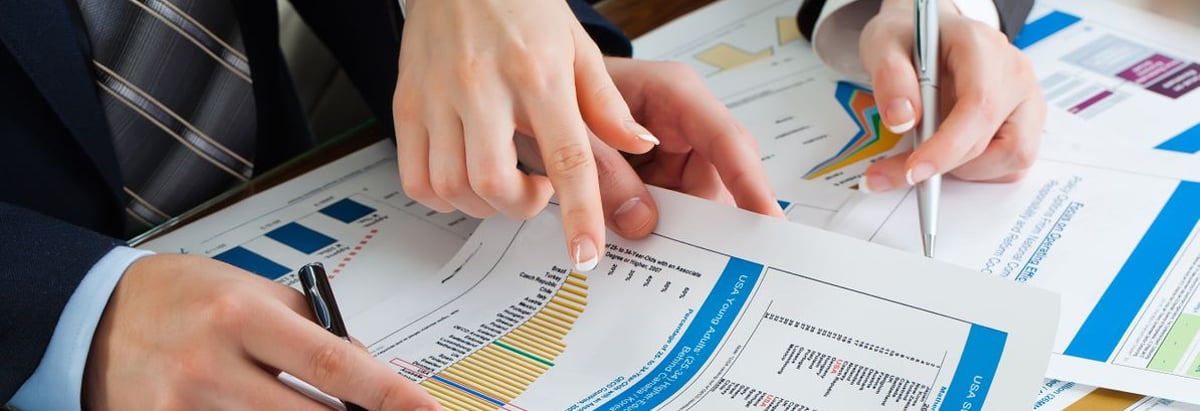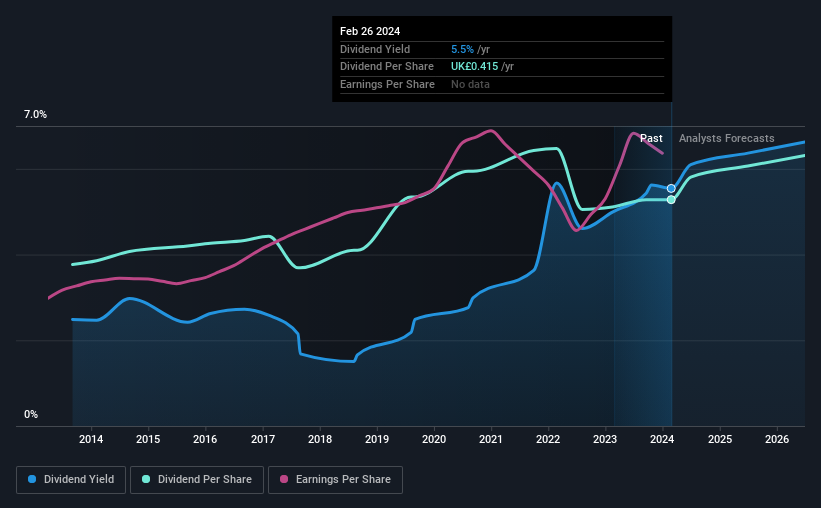
The board of Hargreaves Lansdown plc (LON:HL.) has announced that it will pay a dividend of £0.132 per share on the 28th of March. This takes the dividend yield to 5.5%, which shareholders will be pleased with.
View our latest analysis for Hargreaves Lansdown
Hargreaves Lansdown's Earnings Easily Cover The Distributions
A big dividend yield for a few years doesn't mean much if it can't be sustained. Prior to this announcement, Hargreaves Lansdown's dividend was comfortably covered by both cash flow and earnings. This indicates that quite a large proportion of earnings is being invested back into the business.
EPS is set to fall by 5.8% over the next 12 months. However, if the dividend continues along recent trends, we estimate the payout ratio could reach 75%, meaning that most of the company's earnings are being paid out to shareholders.

Dividend Volatility
The company's dividend history has been marked by instability, with at least one cut in the last 10 years. Since 2014, the dividend has gone from £0.296 total annually to £0.415. This implies that the company grew its distributions at a yearly rate of about 3.4% over that duration. We're glad to see the dividend has risen, but with a limited rate of growth and fluctuations in the payments the total shareholder return may be limited.
Dividend Growth May Be Hard To Achieve
With a relatively unstable dividend, it's even more important to see if earnings per share is growing. Earnings per share has been crawling upwards at 4.6% per year. Growth of 4.6% per annum is not particularly high, which might explain why the company is paying out a higher proportion of earnings. This isn't necessarily bad, but we wouldn't expect rapid dividend growth in the future.
In Summary
In summary, it's great to see that the company can raise the dividend and keep it in a sustainable range. The dividend has been at reasonable levels historically, but that hasn't translated into a consistent payment. The dividend looks okay, but there have been some issues in the past, so we would be a little bit cautious.
Investors generally tend to favour companies with a consistent, stable dividend policy as opposed to those operating an irregular one. Still, investors need to consider a host of other factors, apart from dividend payments, when analysing a company. As an example, we've identified 1 warning sign for Hargreaves Lansdown that you should be aware of before investing. Looking for more high-yielding dividend ideas? Try our collection of strong dividend payers.
Valuation is complex, but we're here to simplify it.
Discover if Hargreaves Lansdown might be undervalued or overvalued with our detailed analysis, featuring fair value estimates, potential risks, dividends, insider trades, and its financial condition.
Access Free AnalysisHave feedback on this article? Concerned about the content? Get in touch with us directly. Alternatively, email editorial-team (at) simplywallst.com.
This article by Simply Wall St is general in nature. We provide commentary based on historical data and analyst forecasts only using an unbiased methodology and our articles are not intended to be financial advice. It does not constitute a recommendation to buy or sell any stock, and does not take account of your objectives, or your financial situation. We aim to bring you long-term focused analysis driven by fundamental data. Note that our analysis may not factor in the latest price-sensitive company announcements or qualitative material. Simply Wall St has no position in any stocks mentioned.
About LSE:HL.
Hargreaves Lansdown
Provides investment services for individuals and corporates in the United Kingdom and Poland.
Flawless balance sheet average dividend payer.
Similar Companies
Market Insights
Community Narratives




